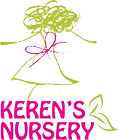Art is a powerful tool for self-expression, and for children, it can be especially valuable. When children are given the opportunity to create art, whether it be at home, nursery, or school, they are able to communicate their thoughts, feelings, and experiences in a way that may be difficult to express through words alone. This can be incredibly empowering for children, as it allows them to explore and understand their emotions, build self-confidence, and develop important cognitive and motor skills. Here at Keren’s Nursery, we provide the children with the opportunity to create art in a range of expressive ways, from finger painting to tree bark tracing.
Benefits Of Art For Children
Emotional Benefits
One of the key benefits of art for children is that it provides a safe and supportive outlet for self-expression. Children often experience a range of emotions that they may not fully understand or be able to articulate. By engaging in creative activities such as drawing, painting, or sculpting, children can externalise these emotions and communicate them through their artwork. This can be especially helpful for children who may be experiencing stress, anxiety, or other emotional challenges, as it provides a healthy way to process and express their feelings.
Psychological Benefits
Art can help children develop their self-confidence and sense of identity. When children create art, they are able to express themselves in a way that is unique and personal to them. This can help them develop a sense of autonomy and ownership over their creative work, which can in turn boost their self-esteem and sense of self-worth. Additionally, creating art can help children develop a sense of identity and belonging within their community, as they are able to share their artwork with others and receive feedback and validation from others.
Cognitive Benefits
Access to arts and crafts during childhood can also have a positive impact on children’s cognitive and motor development. Art requires children to engage in a range of skills, from hand-eye coordination and fine motor control to problem-solving and critical thinking. These skills are essential for children’s overall development and can have a positive impact on their academic and social success.
Drawing and painting require children to use their hands in order to create precise lines, shapes, and colours. This can help improve their fine motor skills and hand-eye coordination, which are important for tasks such as writing, typing, and playing sports. Creating art also often involves problem-solving and critical thinking, as children must make decisions about colour, composition, and subject matter. These skills can be useful in a range of academic subjects, from maths and science to languages and humanities.
Finally, art can be a fun and engaging way for children to learn and explore new ideas. Art provides children with a hands-on, experiential learning opportunity that can help them develop a deeper understanding of the world around them, as it can help children learn about different cultures, historical events, and scientific concepts. Art can also be used to teach children important social and emotional skills, such as empathy, communication, and collaboration.
How Can I Encourage And Support My Child’s Creativity?
One way to encourage children’s creativity is to provide them with a variety of art supplies and materials, such as paint, pens, clay, and paper. It is also important to create a safe and supportive environment in which children feel free to express themselves without fear of judgment or criticism. This can involve setting aside dedicated time for art activities, providing positive feedback and encouragement, and displaying children’s artwork in a prominent place in the home. Parents and caregivers can also help children learn about different artists, art movements, and art styles, as well as encourage them to explore different forms of art. This can help children develop a deeper appreciation for art and understand how it can be used to express ideas and emotions.
It is vital for parents and caregivers to recognise the value of art in children’s overall development so that children can continue to explore their creativity even after coming home from school or nursery. Art education and extracurriculars are essential components of a well-rounded education, and children should be given the same level of support and encouragement as they are in other academic subjects.









